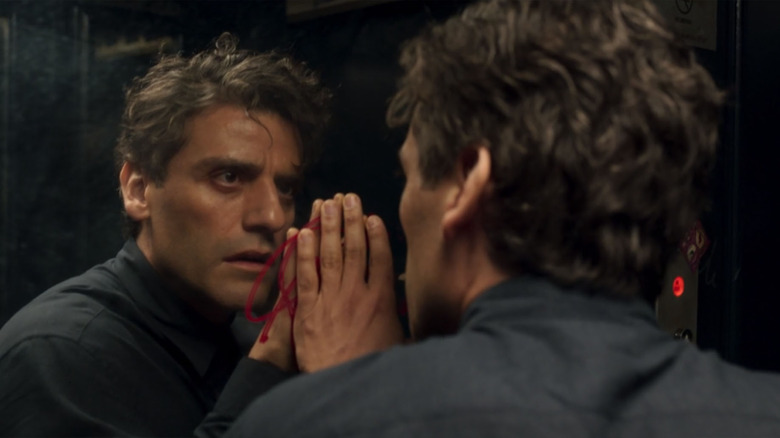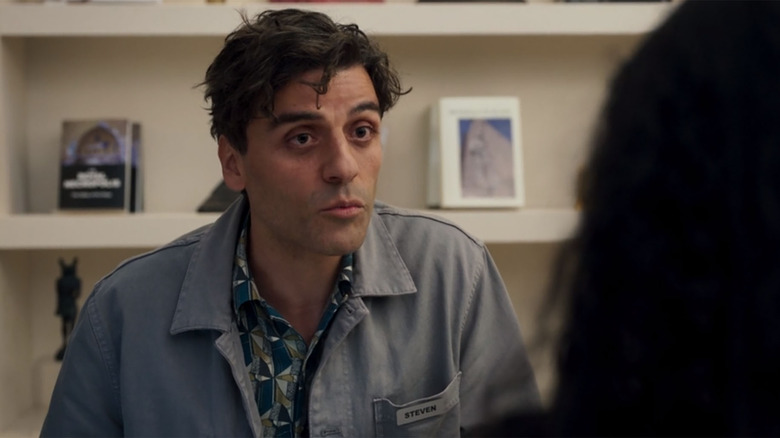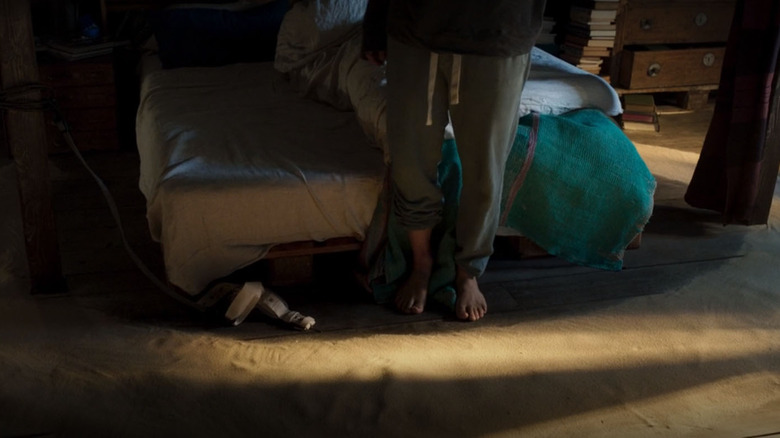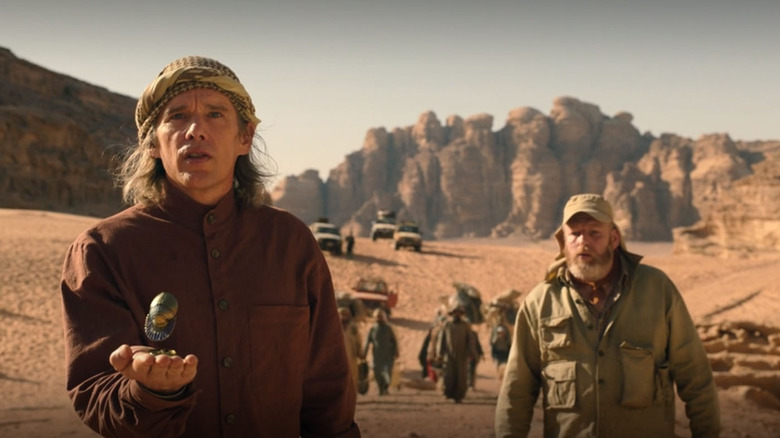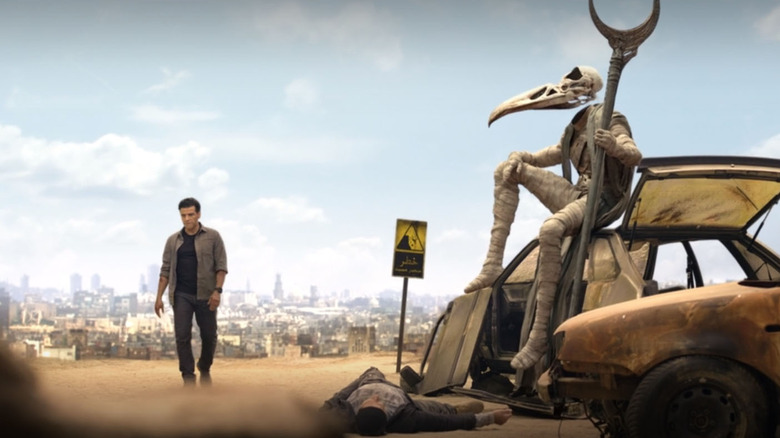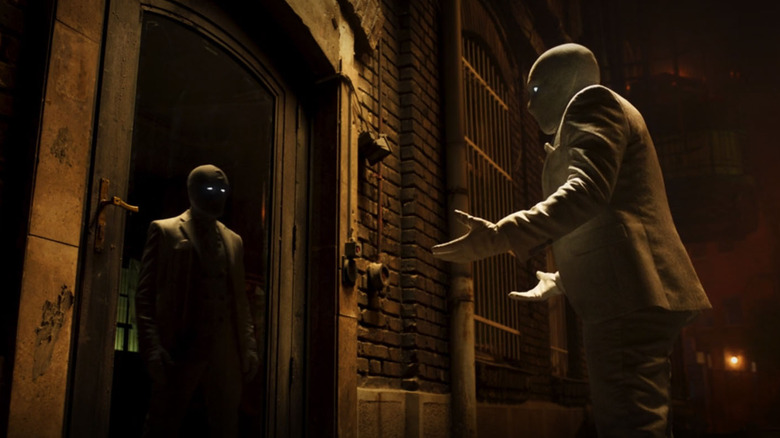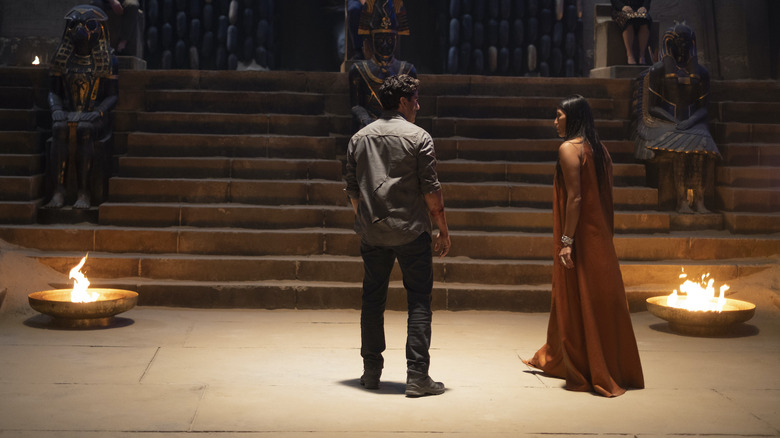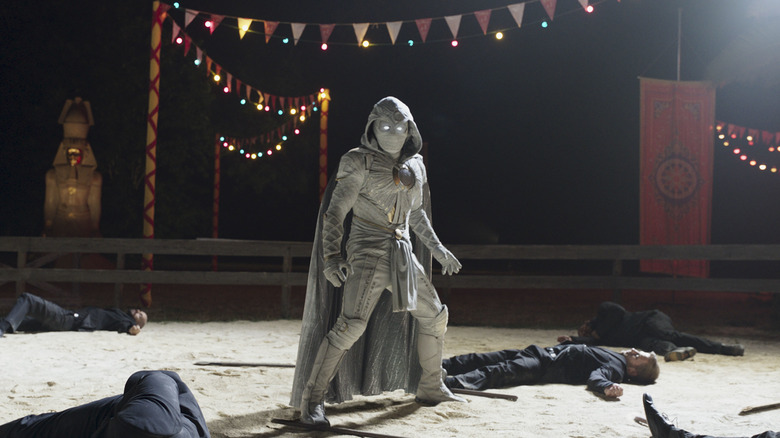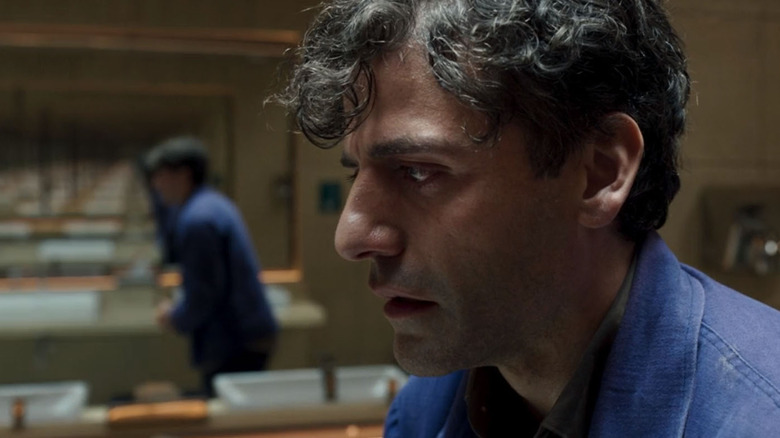Moon Knight Cinematographer Gregory Middleton Discusses Mirrors, Darkness, And The Desert [Interview]
"Moon Knight" doesn't look or feel like any of the other Marvel Cinematic Universe shows or movies, and a big part of that is because of the series' cinematography. Episodes 2 and 4 were shot by "The Green Knight" cinematographer Andrew Droz Palermo, and the rest of the episodes were shot by Gregory Middleton, best known for his work as cinematographer on HBO's "Game of Thrones" and "Watchmen." For all but episodes 2 and 4 of "Moon Knight," Middleton was in charge of making sure everything was properly lit, in focus, and that the camera helped tell the story while also delivering beautiful imagery for audiences to enjoy. Thankfully, he had a team of great collaborators, making the whole process a bit smoother.
I had the chance to sit down with Middleton via Zoom to discuss all things "Moon Knight," including the show's frequent use of mirrors, embracing nighttime shoots, and bringing Khonshu to life. "Moon Knight" may have been a major team effort, but Middleton played a pivotal role in making it look so great.
This interview has been edited for clarity.
'When you have a dream, you pull things from the real world into your dream.'
I spoke with Stefania Cella today, the production designer, and she said that she really enjoyed working with the cinematographers to make the night scenes come to life. Can you tell me a little bit about how all the teams worked together to make "Moon Knight" look gorgeous?
Well, first of all, thank you very much for the compliment and it's a great privilege to actually talk about the craft. Yes, Stefania's an amazing designer. One of the things is people often mistake photography for great production design. They go hand in hand. So me lighting one thing one way and her designing a different way will just result in a mess. She's an incredible collaborator. We want to bring an element of darkness into this show because of the element of mystery with the character not knowing what's real, what's not, which is a bit more darkness than I think other Marvel shows and films have had. That was very deliberate and we pitched that and they embraced it and we just ran with it.
She was all on board with that, as was Andrew [Droz Palermo], who's a great collaborator. So that was one part. The darkness was one part. The other thing was to try and always put elements within the story, within the frame that would enrich ... Seeing on a second viewing, for example, and what Mohamed [Diab, the director for these episodes] would say is, "When Steven is doubting his reality ..." When you have a dream, you pull things from the real world into your dream. They don't just come out of nowhere. So we would pepper everything we could always with stuff that could work if you were doubting the reality later on and watch it again.
'It must always be a question in terms of what's real and what's not real.'
Speaking of that, there's so many amazing Easter eggs and clues as to what's going on. Are there any that just really stand out to you or that you are really proud of?
Oh, well, I'm not allowed to talk past episode 4, so there might be a few early that refer to things later, but I can't talk about that. But I think it's more about what I was saying before about ... Also, it's a whole team. Mohamed had a great expression, my director from episodes one, three, and five, and six, which was, it must always be a question in terms of what's real and what's not real, which is a great way to remember that we like, "Oh, yeah, we got to always remember to have this in the back of our minds." So I wish I had one scene that I could think of something like ... I'm sorry, I'm blanking on a single one.
You're fine.
This is like picking your favorite child. It's one of those problems. But it was something that we all embraced and it would be like myself, Andrew, both of the other directors, and our camera operator, and the on-set dresser. It's like, "Oh, yeah, maybe we should put this here." I think originally in the script, the river of sand around his bed in one to mark his footprints, I think it was confetti in the original script. Then I think I suggested like, "Well, there's sand in the fish tank. It should be something he already has. Obviously, we're going to end up in the desert later ..." It was like, "Oh." That kind of thing and then everyone starts piling on to those concepts. Then suddenly, it's like a runaway train and suddenly, you have all these other things that if you watch a second time, you'll be hopefully excited about.
'You only have one shot, make it the right one.'
I love that. Speaking of deserts, what are some of the challenges of shooting in one?
Oh, let's see. Apart from the obvious, it's hot and it's dusty. Well, there's so many challenges. Cameras are electronic now. We don't shoot with film much anymore. They don't like temperatures over 48 Celsius and dust in them. So just keeping things sealed is a big challenge. Also, one of the big challenges is it's an incredibly beautiful place and you have to make sure you point the camera the right way. Also, when there's an abundance of amazing views, you have to drill down to make sure you've got the right view for what the story is.
I'm very proud of the two shots in episode 3 that introduce Harrow with the scarab when he finds the tomb. That's an incredible view of the Wadi Rum Valley [in Jordan, which stood in for Egypt] and we went up there to scout and Mohamed spent tons of time walking around, like, "Is this right? Is this right?" Looking at all these versions of what is the most picturesque and the most stunning thing that will tell us, "Holy cow. They've gone a long way for this thing." You try a lot of things and you look at them all and pick the most important. So sometimes the biggest challenge is don't mess it up. Don't pick the wrong shot. You only have one shot, make it the right one.
'You try and replicate having a giant bird man as best you can.'
How did the photography team work with special effects to make Khonshu fit into the world? How did you film around not having a giant bird man there?
Well, you try and replicate having a giant bird man as best you can. So we had Karim [El Hakim], who is our stand-in actor for him who read his lines. He was in a costume that Meghan [Kasperlik] made as much as where we end up as conscious costume would be for visual effects. Then he would wear a stick on his head for an approximate height, which is like nine feet. Then we would have an actual sculpted Khonshu head to shoot as a reference, after you do the scene. So would Karim act the scene with Oscar, he'd walk around, we'd shoot the scene, maybe without him once or a plate.
Then we would bring in the head as a reference. Also, I have to light the scene as if he's really there. You don't not light it because he's not there. That's why having Karim and having the head is so important because if I don't light as if he's really there, when they put him in CG and they will try and capture the lighting on the set I have, it won't look real if they light him and I haven't. So there's a lot of elements involved in that, and also, Oscar needs a scene partner. He needs someone to play the scene with.
'The biggest thing was to be anchored with the character.'
Are there any differences in the way that you shoot Steven versus the way that you shoot Mark?
Oh, that's a good question. I think between [episodes] 1 to 3, not so much. I think the biggest thing was to keep it from their perspective, because 3 is more like Mark's perspective for the most part, until he hands it over. The biggest thing was to be anchored with the character. So when it was Steven the first time, he's more panicked. So it was a bit more activity to the camera. Mark is more static, but the camera being anchored to him, either Steve or Mark, was the most important element. So that's similar, although the energy is a bit different because Mark is not running around like Steven. He's not as frantic.
'There was a lot of imagery of the character and things we really wanted to make sure we captured.'
What art or movies did you draw inspiration for, for "Moon Knight"? There's so many great ancient Egyptian mummy stories. What did you look to?
One of the biggest references was, of course, the various runs of the comic because there was a lot of imagery of the character and things we really wanted to make sure we captured. There was a lot of Egyptian art that Mohamed brought and there was a lot of elements of profiles and things in ancient Egyptian art we tried to blend in. I think the comic was the bigger element because that's actually a very interesting thing to do to adapt another form of art and to honor it and put it in there without being a slave to it, without trivializing it. It's a bit tricky and that's something that everyone involved in the show; Stefania and myself and Andrew, all the directors would go like, "Oh yeah, this is a thing for this maybe." ... I guess the biggest thing in comics is everything's deliberate. You drive everything from scratch. So we would try to make all our choices and how we would film a scene and what composition would be as deliberate, if possible.
'He's a bit like Frankenstein's monster.'
You've worked on both horror and superhero shows and movies. You did the cinematography for one of my favorite movies of all time, "Slither."
I was about to say, was it "Slither"? I was guessing it was "Slither."
You also worked on the "Watchmen" series and "Smallville." How did you use the camera to help create this show's unique mix of caped fantasy and real horror?
Oh, that's an interesting combination. Well, the biggest thing was I used darkness in the first episode, like lots of black. I mean, when the elevator opens and on the third floor it's him and just blackness, right? That's a great way to show him isolated, and it makes you terrified. So there's a lot of ways to honor or to express the fear of the unknown with the darkness and what you don't see was a big factor. Then the thing about Moon Knight is he's an oddball character because he's... Like in episode 3 when he's beating up people in the horse arena, he's a bit like Frankenstein's monster. It terrifies Steven seeing Mark doing these awful things. So there was this element of how much do we see him? Then we made a deliberate choice.
I think it was Mohamed's basic thing was, "Well, we want to see this." Well, originally, the concept was quite different. He'd be more hidden, he'd be this boogeyman, but it was actually better for Steven to really see it. So it was better to have a scene where it was more lighting and he could see because that's really what Steven wants to see. So a lot of the filmmaking is trying to find the right point of view of the scene for the audience and also for the characters and to do that way, if that makes sense. So that's two examples of those things.
'Mirrors are complicated.'
Did you have any difficulties with any of the scenes with mirroring, where you basically have Oscar Isaac acting with himself? How did you create those?
[Sarcastically] Mirrors are easy. [laughs] So yes, mirrors are complicated. I mean, it was a way for him to act with himself. So for example, at the end of episode one, when he goes into the bathroom and the camera follows Steven and he's freaking out, we see Mark one way, then the other way, then back. We had to figure out how to do all that in one shot, because Mohamed really wanted to do it without cuts. Also, we had to make it so that Oscar could act that way as Steven and drive the scene and dictate the pace. So once we worked out what lines would be where and we previs-ed it, I did a separate test with a stand-in to make sure the shots would work, for visual effects to make sure we didn't move the camera too far so that each element of Mark could be done statically, if you know what I mean, and tracked in.
So it was a lot of choreography to help create, hopefully, the feeling of just being with Steven ... and not make it look like we're doing a visual effects shot, So there were various techniques. Sometimes [we] just try and make sure we're not moving and we can shoot Oscar separately, at a later date, because he can't go back and forth between characters in five minutes. So they're often shot differently, so we applied various techniques at different times, just tried to pick the right one that would work.
New episodes of "Moon Knight" debut Wednesdays on Disney+.
